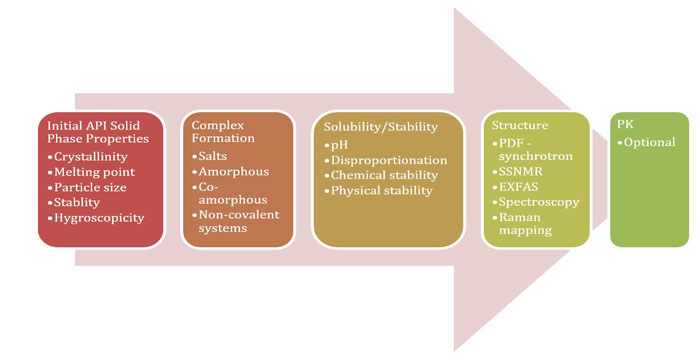WEST LAFAYETTE, IND. (PRWEB) JUNE 10, 2019
Improved Pharma LLC announces the publication of “Predictive and Accelerated Formulation Design Using Synchrotron Methods” in the July 2019 issue of AAPS PharmSciTech. The article was published online on April 29th, 2019. The authors are Stephen R. Byrn and Pamela A. Smith of Improved Pharma, along with Xiaoming Sean Chen of Purdue University.
The article is the most recent addition to a theme dedicated to “Team Science and Education for Pharmaceuticals: the NIPTE Model”. NIPTE, or The National Institute for Pharmaceutical Technology & Education, is a collaboration of academia and industry. The mission is to improve the way medicines are designed, developed and manufactured to meet the needs of patients in the 21st century.
Improved Pharma’s review article presents a predictive/accelerated formulation strategy that is ideally suited for poorly soluble solid oral drugs. The first step is to understand and leverage key material properties such as solubility, BCS classification, and the solid-state landscape. Next, amorphous forms and/or complexes are formed, which present a valuable way to ensure high exposure in preclinical studies. To fully characterize important structural information about these complexes, synchrotron-based pair distribution function (PDF) analysis is used. This powerful technique aids in anticipating/predicting stability. Over-reaching all activities is a Quality by Design approach focused on Learning before Doing, which emphasizes doing it right the first time to mitigate risks and reduce time to market.
Commented Improved Pharma’s COO, Dr. Pamela Smith, “It’s an exciting time to be working in this field. Combining synchrotron PDF analysis with formulation design has allowed us to do more than just understand the structure of the complexes. It has given us the ability to predict the relative stability of one formulation over another.”
Adds Improved Pharma’s CSO, Professor Stephen Byrn, “By using these new technologies, we are moving into a new golden age of pharmaceuticals where we can attack many of the most difficult and troublesome diseases.”
The publication is available online at: https://link.springer.com/article/10.1208/s12249-019-1375-2.

